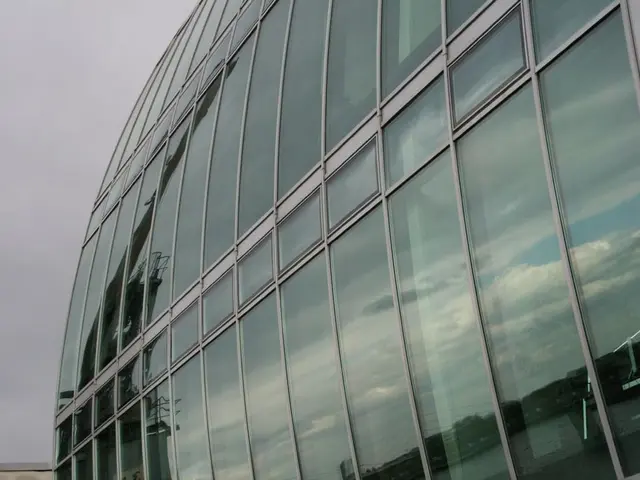AI Development Advances within Venture Capital Industry
In the ever-evolving world of Artificial Intelligence (AI), a new layer is making waves—the vertical AI market. According to recent insights, this middle layer of the AI stack, as explained by the author in December 2022, is gaining traction and offering more specialized and distributed opportunities.
The Capital Deployment framework reveals that the "Winner Take All" dynamic varies across the AI stack. The foundation and application layers show the highest concentration, while the vertical layer presents a more balanced landscape due to industry-specific needs and specialization opportunities. This moderate distribution, unique to the vertical layer, allows multiple winners per vertical.
Vertical AI players, such as those in healthcare, accounting, and finance, are advancing by delivering highly specialized, domain-specific solutions that outperform generic AI models in practical impact and integration with existing workflows.
In the healthcare sector, vertical AI is transforming patient outcomes through predictive diagnostics, precision medicine, and accelerating drug development timelines. Over 650 FDA-approved AI-enabled medical devices exist, with applications in radiology, pathology, and patient monitoring becoming widespread. AI platforms analyse patient-specific data (DNA, medical history, imaging) to recommend personalized treatments, drastically improving efficiency and effectiveness.
Finance and accounting industries are also benefiting from vertical AI. Leading investment banks like Goldman Sachs, JPMorgan Chase, and Morgan Stanley deploy generative AI and vertical AI tools to revolutionise workflows such as legal document analysis, contract intelligence, and financial operations automation, saving hundreds of thousands of work hours and millions in costs annually.
Other sectors like cybersecurity are also heavily leveraging vertical AI for threat detection, vulnerability assessment, and automated incident response.
Looking ahead, the vertical AI market is expected to experience explosive growth, fuelled by venture capital and growth equity focusing on early-stage innovation and scaling proven solutions. The ability of vertical AI to seamlessly integrate with workflows and deliver domain expertise means it will outpace horizontal AI in growth and value capture.
The future also promises increasing displacement of manual, manpower-intensive tasks by AI-driven automation across knowledge-based industries. The rising importance of context-sensitive, vertical AI systems offering practical, real-world business impact will become increasingly crucial. Success increasingly depends on how well AI can address specific industry challenges with accuracy and efficiency.
In summary, the current state of vertical AI is robust and rapidly maturing, particularly in healthcare and finance where large-scale deployments prove measurable benefits. The future trajectory promises accelerated adoption, enhanced customization, and significant economic impact across verticals, driven by specialized AI models integrating deep domain knowledge and proprietary data. Vertical AI is redefining how industries innovate and operate by turning complex, specialized workflows into optimized, automated processes.
As for the broader AI landscape, the "Wow Effect" of AI advancements quickly gives way to the "Hedonic Treadmill," where these tools are taken for granted, but their loss (Hedonic Decline) reveals their critical value. The release of AI tools to the public is critical to ensure they are taken for granted rather than seen as a threat. This is evident in the case of ChatGPT, the fastest-adopting consumer app, even faster than TikTok. If OpenAI's ChatGPT were to disappear, many people and professionals might be unable to operate at the same level.
In the context of these developments, companies like Salesforce are aggressively tackling specific use cases, such as customer support automation, in a competitive fight with Microsoft. Salesforce has reorganized its entire company to focus on AI, betting on AI Agents as co-pilots or autonomous orchestration workflow to automate tasks like customer support.
Barbelling out is a strategy that combines risky, outsized bets with stable, reliable investments to ensure resilience while capturing high growth potential. As the vertical AI market continues to evolve and mature, this approach could prove invaluable for enterprises trying to implement AI technologies as quickly as possible while reconciling their entire organizations.
- In the realm of Artificial Intelligence (AI), the vertical AI market is a new layer that is starting to make a significant impact, as explained by the author in December 2022.
- The vertical AI layer presents a more balanced landscape due to its industry-specific needs and specialization opportunities, allowing multiple winners per vertical.
- Vertical AI players in sectors such as healthcare, finance, and accounting are achieving progress by delivering domain-specific solutions that outperform generic AI models.
- AI is improving healthcare outcomes through methods like predictive diagnostics, precision medicine, and accelerated drug development timelines.
- Finance and accounting industries are benefiting from vertical AI, with leading banks like Goldman Sachs and JPMorgan Chase deploying AI tools for automating workflows.
- The vertical AI market is predicted to experience rapid growth, with venture capital and growth equity driving innovation and scaling of solutions.
- Enterprises adopting AI technologies can benefit from the "barbelling out" strategy, which combines risky, high-growth investments with stable, reliable ones, ensuring resilience and maximizing potential growth.








